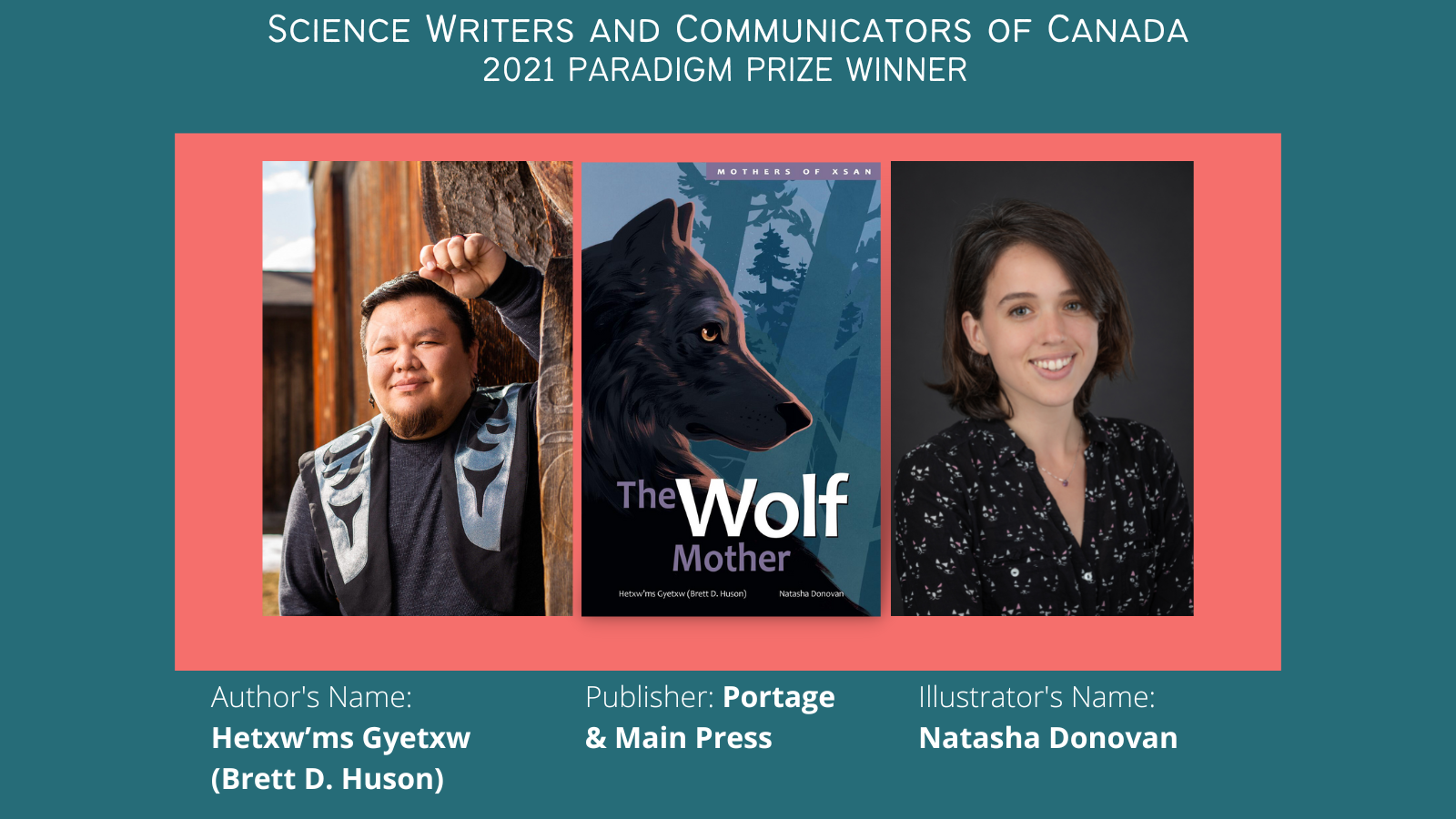Readers can discover the life cycle of the great grey wolf and its impact on the Gitxsan people in The Wolf Mother.

The Wolf Mother takes readers through the life cycle of the great grey wolf and its role in a vibrant ecosystem of animals, people and weather. The children’s book is part of a larger series, Mothers of Xsan, where readers can discover the society and culture of the Gitxsan people of the Pacific Northwest Interior, what settlers call British Columbia.
The series’ multi-award-winning author, Hetxw'ms Gyetxw, also known as Brett D. Huson, is a proud member of the Gitxsan Nation. He seeks to challenge stereotypes and tokenization of Indigenous education systems through his work. He is currently a research associate at the Prairie Climate Centre at the University of Winnipeg, where he has been developing the Indigenous Knowledges section of the Climate Atlas.
Métis illustrator Natasha Donovan has been bringing the ecosystems of Gitxsan to life from the first book in the series, The Sockeye Mother, which was also the first picture book she worked on. Her work focuses on children’s illustration and comics. Her art has appeared in This Place anthology, Wonderful Women of History,Surviving the City and From the Roots Up, among other books and comics. Originally from Vancouver, Donovan currently resides in Washington.
We chatted with Huson and Donovan about the writing and illustration process for The Wolf Mother. The answers have been edited for length and clarity.
Can you tell us a little bit about what The Wolf Mother is all about?
BH: The wolf mother is a small window into the life cycle of the wolves of the Pacific Northwest on Gitxsan Territory. It isn’t an exhaustive exploration, but provides young people and even their parents with an introduction to wolves' impacts on their ecosystem and how they exist within the Gitxsan culture.
What in particular inspired the writing of this book?
BH: I grew up seeing wolves around my home and out on my family’s territory all my early life. My grandmother’s Gitxsan name was Dimdigibuu, meaning “to be like a wolf.” It was a story I felt like sharing because of my experiences growing up and for the namesake of one of our matriarchs.
The book combines narrative storytelling with factual information about wolves, from their life cycle to their role in the ecosystem. What do you hope children (and parents) learn from this book?
BH: My book equips readers with the education not typically shared in public schools. Young Gitxsan people learn how their ecosystems work at a very young age, which changes their perspective on the world around them. I hope that the stories inspire people to learn more about the ecology of the lands they call home.
Tell us about the illustration process. How did you come to collaborate with Natasha?
BH: Our paths crossed when I was shown one of her paintings, a salmon decomposing and turning into a tree. Natasha has been illustrating for the Mothers of Xsan series from the first book. She will read the manuscript and create vibrant spreads that bring my stories to life. She will also incorporate my formline designs that express Gitxsan culture through art.
ND: The illustration process on my end involves reading Brett’s amazing writing over and over, and drawing, in a very rough sketchy way, the images that his words evoke. I do a lot of research about the species and the environment to make decisions about what types of landscapes, plants, animals, etc. to include. Brett works on the formline pieces simultaneously, and I will integrate them into the final art after all the colouring is complete.
What was the biggest challenge you faced when writing this book? What about the illustrations?
BH: A challenge with writing the Mothers of Xsan series is reconciling the differences in the English language and writing our words in an English format. My work and research focus heavily on breaking down the gatekeeping of research practices and ways of knowing. I hope that researchers can utilize indigenous methodologies, perspectives and pedagogical approaches in an excellent way to change mindsets and contribute wholeheartedly to adaptation research. So to have recognition through a western system is so very important and shows that we are in an era where the pluraverse of perspectives can now be included in how we research and learn about the world around us.
ND: Now that we’re halfway through this series, my challenge as an illustrator is to make sure that each book in the Mothers of Xsan series has its own distinctive character, while at the same time, is cohesive. I don’t want to be repetitive with imagery, but I do want to make sure it's clear to the reader that each species’ story takes place within the same general landscape, and that each book is a part of a larger story.
What key advice would you give to aspiring writers and illustrators?
BH: We must just begin our work. All aspects of our journeys build the foundation of who we become. Overcome the fears of failure and work through the losses like we praise the successes.
ND: I think a lot of aspiring creators struggle with a kind of perfectionism that prevents them from showing others their work until it’s “good enough.” My advice is to ignore that impulse. Show people your work, make a portfolio, and reach out to people in your chosen industry for feedback. It’s not easy, but it’s a very effective way of improving your skills and making the kind of art you want to make.
By Cristina Sanza
Cristina Sanza is a Digital Journalism Instructor and Writing Coach in the Department of Journalism at Concordia University in Montreal. She also coordinates the Concordia Science Journalism Project team and the Projected Futures international science journalism graduate summer school. At the SWCC, she serves as the blog editor and digital media committee volunteer.
